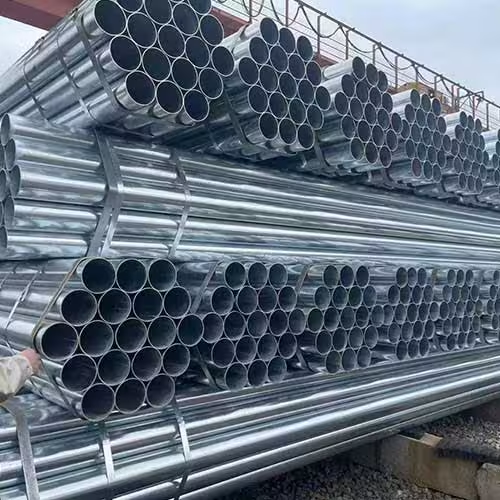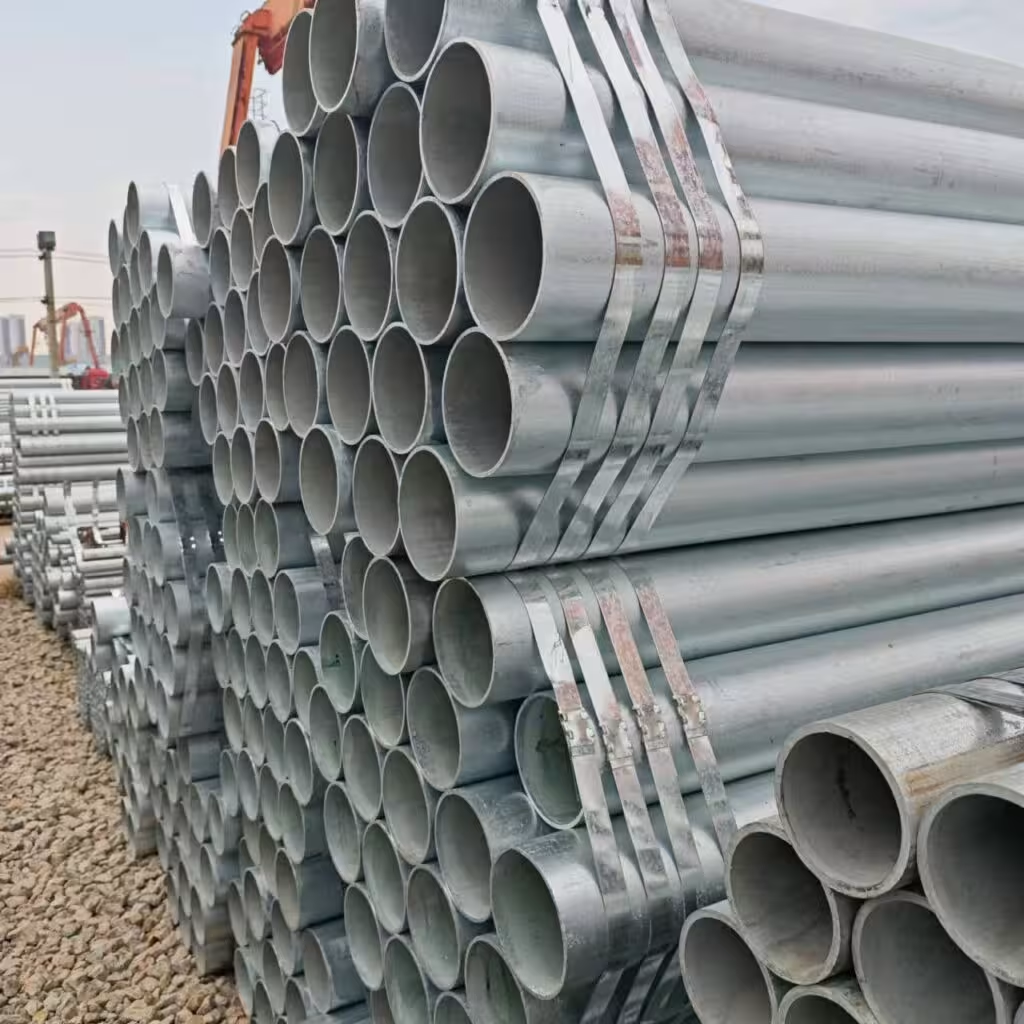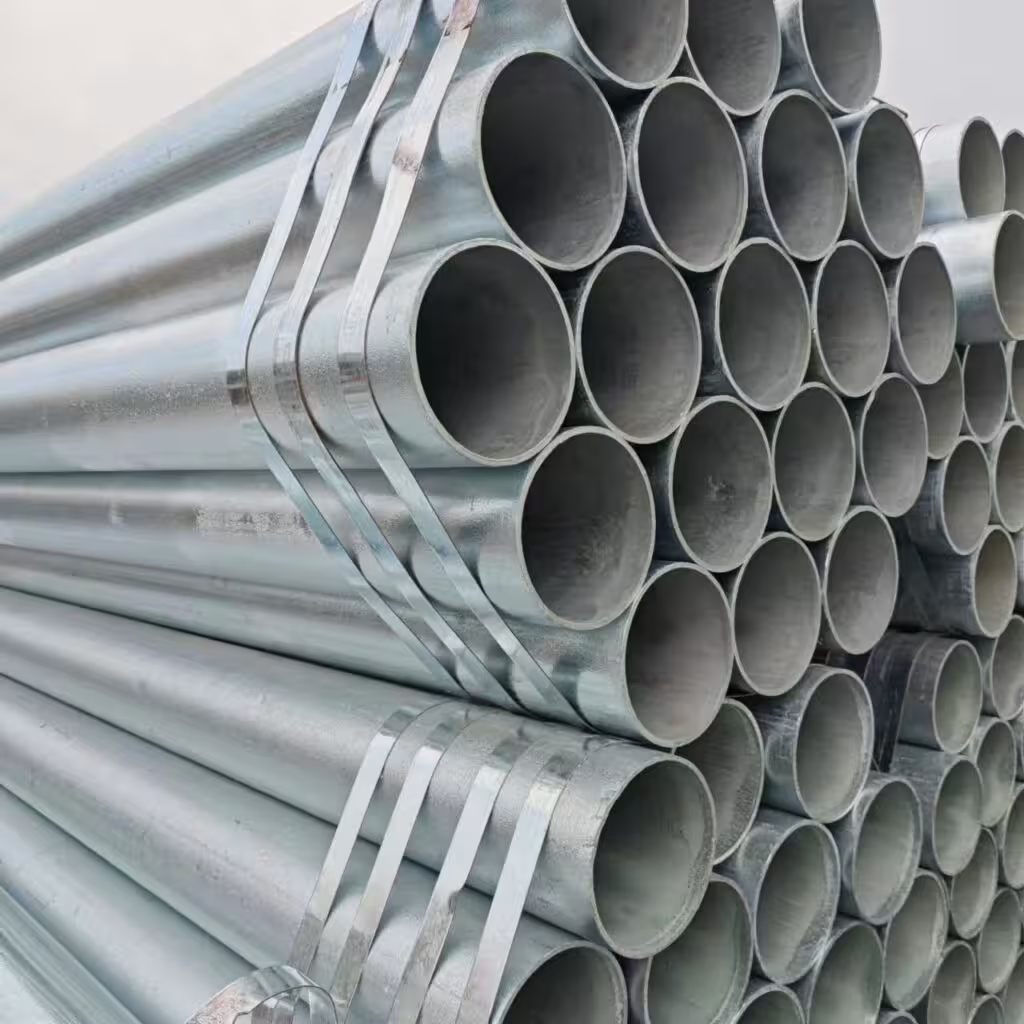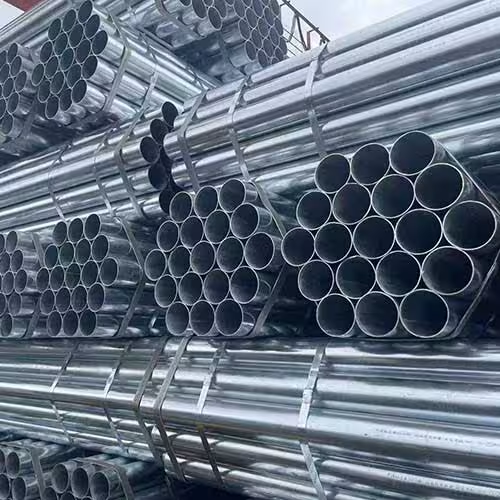مرحبًا بك في مدونتي!
قبل أن نتعمق في المحتوى، أود أن تنضموا إليّ على منصات التواصل الاجتماعي الخاصة بي حيث أشارك المزيد من الأفكار وأتفاعل مع المجتمع وأنشر التحديثات. إليك كيف يمكنك التواصل معي:
فيسبوك : فيسبوكhttps://www.facebook.com/profile.php?id=61565500692293
والآن، لنبدأ رحلتنا معًا. آمل أن تجدوا المحتوى هنا ثاقباً وجذاباً وقيّماً.
جدول المحتويات
مقدمة

Galvanized pipe is a widely used material in construction, plumbing, and industrial applications due to its enhanced durability and resistance to corrosion. When considering what is galvanized pipe, it is essential to understand its protective coating process, which involves applying a layer of zinc to steel or iron pipes. This zinc coating helps prevent rust and corrosion, significantly extending the lifespan of the pipe.
Galvanized pipe has been a preferred choice for various industries, including water supply systems, gas transportation, and structural frameworks. The protective zinc layer acts as a barrier against moisture, making it an ideal option for both indoor and outdoor applications. However, as technology advances, new materials like PVC and stainless steel have started to replace galvanized pipe in some areas.
This article explores what is galvanized pipe, its manufacturing process, advantages, applications, comparisons with other piping materials, and how to maintain it properly. Understanding these aspects can help you make an informed decision when choosing the right piping solution for your needs.
ما هو galvanized pipe and how is it made?


The galvanization process
To answer the question of what is galvanized pipe, we need to look at its manufacturing process. The galvanization process involves coating steel or iron pipes with zinc to protect them from corrosion. There are two main methods used to galvanize pipes:
1. Hot-dip galvanization
This is the most common method used to manufacture galvanized pipe. In this process, steel or iron pipes are submerged in a molten zinc bath at high temperatures (around 450°C or 850°F). The zinc bonds with the surface of the metal, creating a durable and corrosion-resistant coating.
2. Electro-galvanization
Electro-galvanization involves applying a thin layer of zinc to the pipe through an electrochemical process. This method produces a smoother finish but provides less corrosion resistance compared to hot-dip galvanization.
Characteristics of galvanized pipe
- مقاومة التآكل: The zinc coating prevents rust, extending the pipe’s service life.
- المتانة: Galvanized pipe is strong and can withstand harsh environmental conditions.
- Easy installation: It can be threaded or welded, making it a versatile piping option.
- فعالة من حيث التكلفة: Compared to stainless steel, galvanized pipe offers a more affordable corrosion-resistant solution.
تطبيقات galvanized pipe
Water supply and plumbing systems
One of the primary uses of galvanized pipe is in water supply systems. The corrosion-resistant properties of galvanized pipe make it suitable for transporting water in residential and commercial buildings. However, over time, the zinc coating can wear off, leading to rust buildup inside the pipe.
Gas and oil transportation
Galvanized pipe is commonly used in gas and oil transportation pipelines due to its strength and ability to withstand external environmental conditions. The zinc coating provides additional protection against corrosion, especially in underground applications.
Structural and construction applications
In construction, galvanized pipe is used in fencing, scaffolding, and handrails due to its durability. Its ability to resist environmental elements makes it an excellent choice for outdoor structures.
Agricultural irrigation systems
For agricultural purposes, galvanized pipe is widely used in irrigation systems because of its ability to withstand exposure to water and chemicals. It ensures long-term performance without frequent replacements.
Automotive and industrial applications
Many industrial settings use galvanized pipe for air compression systems, exhaust systems, and mechanical applications. The automotive industry also incorporates galvanized pipe in vehicle manufacturing to enhance durability.
Comparison: Galvanized pipe vs. other piping materials
The following table provides a comparison of galvanized pipe with other commonly used piping materials:
| الميزة | الأنابيب المجلفنة | أنابيب الفولاذ المقاوم للصدأ | الأنابيب البلاستيكية | أنابيب النحاس |
|---|---|---|---|---|
| مقاومة التآكل | Moderate (coating can wear off) | عالية | عالية | عالية |
| المتانة | عالية | عالية جداً | معتدل | عالية |
| التكلفة | معتدل | باهظة الثمن | Affordable | باهظة الثمن |
| الوزن | ثقيل | ثقيل | خفيف الوزن | خفيف الوزن |
| سهولة التركيب | معتدل | معتدل | سهولة | معتدل |
| التطبيقات الشائعة | Plumbing, gas, construction | Industrial, medical | Plumbing, drainage | Plumbing, HVAC |
Advantages and disadvantages of galvanized pipe

Advantages of galvanized pipe
- Extended lifespan: The zinc coating prolongs the service life of the pipe by preventing rust and corrosion.
- قوة عالية: Galvanized pipe is strong and can support heavy loads, making it ideal for construction and industrial applications.
- فعالة من حيث التكلفة: Compared to stainless steel, galvanized pipe provides a budget-friendly corrosion-resistant option.
- Versatile applications: Suitable for a wide range of industries, including plumbing, gas transport, and agriculture.
Disadvantages of galvanized pipe
- Potential for corrosion over time: While galvanized pipe resists rust initially, the coating can wear off over time, leading to internal corrosion.
- Heavy weight: Compared to PVC and copper pipes, galvanized pipe is heavier, making installation more labor-intensive.
- Limited suitability for drinking water: In some cases, the zinc coating may release harmful particles into the water, leading to potential health risks.
الخاتمة
Understanding what is galvanized pipe helps in making informed decisions regarding its usage in different applications. With its corrosion resistance, durability, and affordability, galvanized pipe remains a popular choice in construction, plumbing, and industrial sectors. However, its potential for corrosion over time and the rise of alternative materials like stainless steel and PVC have led to its gradual replacement in certain areas.
When selecting galvanized pipe, it is crucial to consider the intended application, environmental conditions, and long-term maintenance requirements. Whether for water supply, gas transportation, or structural frameworks, galvanized pipe continues to play a significant role in modern infrastructure.
الأسئلة الشائعة
What is galvanized pipe and why is it used?
Galvanized pipe is steel or iron pipe coated with zinc to protect against rust and corrosion. It is commonly used in plumbing, gas transportation, and construction due to its durability.
How long does galvanized pipe last?
The lifespan of galvanized pipe varies based on environmental conditions and usage. On average, it lasts between 40 to 70 years in residential plumbing and longer in non-water applications.
Can galvanized pipe be used for drinking water?
In some cases, galvanized pipe may release zinc particles into the water, which can cause health concerns. Many modern plumbing systems have transitioned to safer materials like PVC or copper.
What are the alternatives to galvanized pipe?
Common alternatives include stainless steel, PVC, and copper pipes. Each has unique advantages, depending on the application.
How do you maintain galvanized pipe?
Regular inspections, cleaning, and ensuring the coating remains intact can help extend the lifespan of galvanized pipe. Replacing sections showing signs of corrosion is also recommended.

